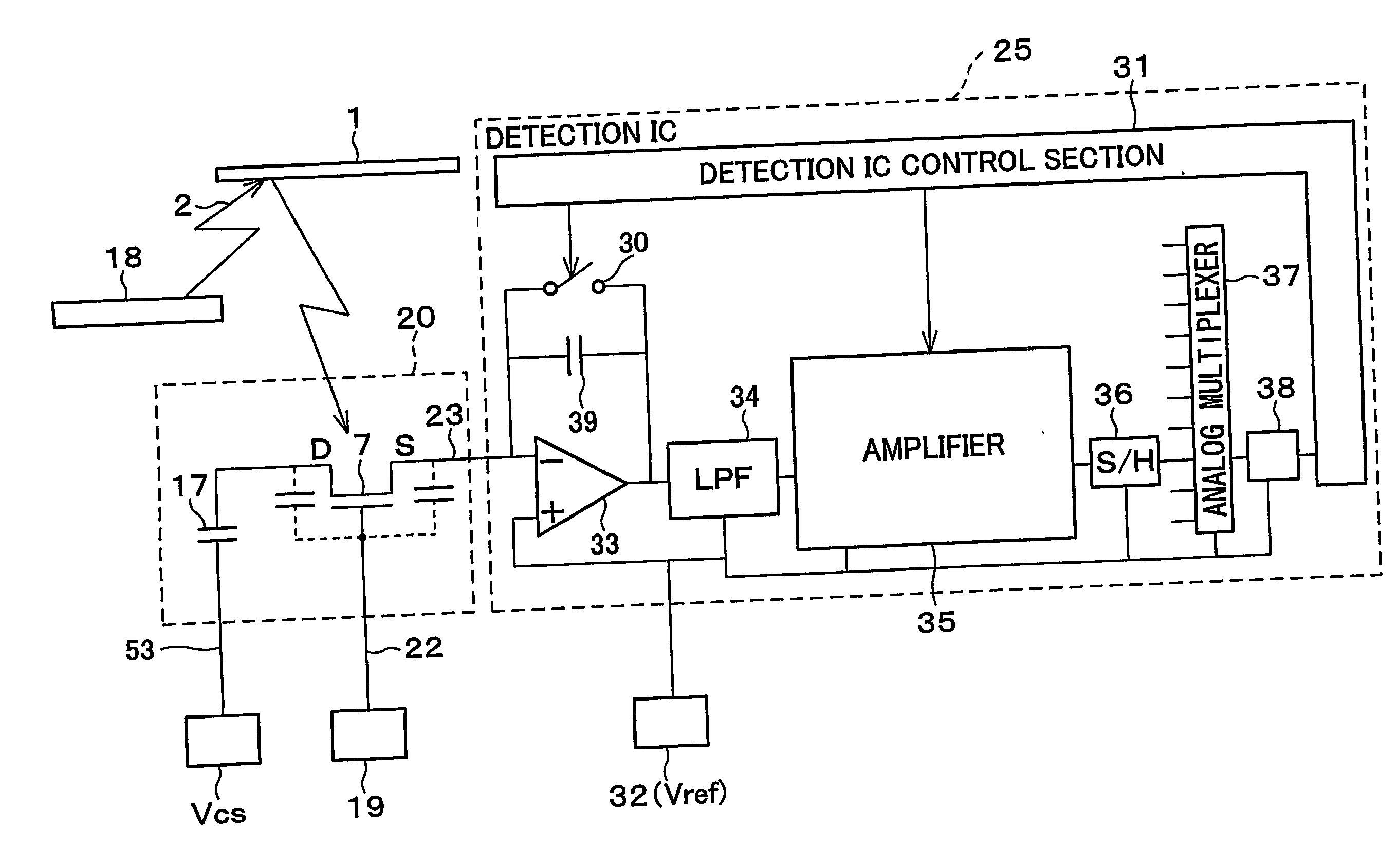Image reading device and image reading method
a reading device and reading method technology, applied in the field of image reading devices and image reading methods, can solve the problems of deterioration of display performance, difficult to improve a reading speed, thinner and lighter scanners, etc., and achieve the effect of improving the operability of the device and improving the reading speed
- Summary
- Abstract
- Description
- Claims
- Application Information
AI Technical Summary
Benefits of technology
Problems solved by technology
Method used
Image
Examples
embodiment 1
[0109] One embodiment of the present invention is described below.
[0110] Note that, the present embodiment describes an example where an image reading device of the present invention is applied to a two-dimensional image sensor.
[0111] First, a photodetecting TFT (photosensor) used in the two-dimensional image sensor is described, and next, the two-dimensional image sensor will be described.
[0112] The photosensor is basically an inversely staggered thin film transistor (TFT) (as long as an upper gate electrode is made of light-transmission material, the photosensor may be the inversely staggered thin film transistor). That is, as shown in FIG. 3, the photodetecting TFT 7 is arranged so that: a bottom gate electrode 11 made of alminium (Al), tantalum (Ta), and the like is formed on an insulating substrate (transparent substrate) 9 made of glass and the like, and a gate insulating film (protection film) 13 made of silicon nitride (SiN) is formed so as to cover the bottom gate electr...
embodiment 2
[0196] Another embodiment of the present invention is described as follows. Note that, as in Embodiment 1, also the present embodiment will explain an example of the two-dimensional image sensor which functions as an image reading device.
[0197] The two-dimensional image sensor according to the present embodiment includes a sensor substrate 40 shown in FIG. 21.
[0198] As shown in FIG. 21, the sensor substrate 40 includes (i) gate lines 22 each of which is extended from a driving circuit 51 as an electric wiring and (ii) data lines 23 each of which is extended from a reading circuit 52 as an electric wiring, and the gate lines 22 and the data lines 23 are disposed in an X-Y matrix manner (lattice manner), and each lattice sections each pixel. Each pixel includes: a thin film transistor (referred to as switching TFT) 41; a thin film transistor for light detection which functions as a phototransistor (referred to as photodetecting TFT) 42; and a pixel capacitor 43 which functions as an...
PUM
 Login to View More
Login to View More Abstract
Description
Claims
Application Information
 Login to View More
Login to View More - R&D
- Intellectual Property
- Life Sciences
- Materials
- Tech Scout
- Unparalleled Data Quality
- Higher Quality Content
- 60% Fewer Hallucinations
Browse by: Latest US Patents, China's latest patents, Technical Efficacy Thesaurus, Application Domain, Technology Topic, Popular Technical Reports.
© 2025 PatSnap. All rights reserved.Legal|Privacy policy|Modern Slavery Act Transparency Statement|Sitemap|About US| Contact US: help@patsnap.com



